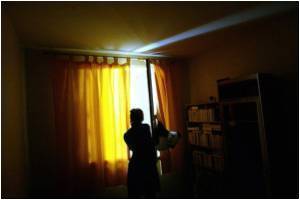People suffering from body dysmorphic disorder, or BDD process visual information abnormally, even when looking at inanimate objects, a new UCLA study has revealed.

The study compared 14 BDD patients, both men and women, with 14 healthy controls.
Researchers used a type of brain scan called functional MRI (fMRI) to scan subjects while they viewed digital photographs of houses that were either unaltered or altered in ways to parse out different elements of visual processing.
One altered set of images included very fine details, such as the shingles on the roof. The other altered images had very little detail and just showed things "holistically," such as the general shape of the house and the doors and windows.
The researchers found that the BDD patients had abnormal brain activation patterns when viewing pictures of the less-detailed houses: The regions of their brains that process these visual elements showed less activation than the healthy controls.
In addition, the more severe their BDD symptoms, the lower the brain activity in the areas responsible for processing the image holistically.
Advertisement
The research appeared in the current online edition of the journal Psychological Medicine.
Advertisement









